.
First of all, thanks to my readers for your intriguing comments on my blog; it's a pleasure to know what you're thinking as you read these articles! Feel free to chime in with your thoughts on the subject of our third player profile, the mercurial Russian Mikhail Youzhny. A sporadic threat to the game’s elite, “Misha” hasn’t quite established himself as a perennial contender but has developed a stylish, engaging game as well as a charmingly quirky victory salute (see above). As with our previous profiles, we’ll begin by recalling five key achievements and five key disappointments in his career before outlining three strengths and three areas for improvement. At the close, the profile will briefly discuss what to expect from Youzhny during the latter stages of what has been a rollercoaster career.
Best of Five: Achievements:
5) 2008 Australian Open: Capitalizing on his title in China, Youzhny surged into the quarterfinals of the year’s first major on a medium hard-court that probably suits his game better than the surface at any other major. Especially impressive was his dominant victory over Davydenko, since he never had defeated his higher-ranked compatriot and had long labored in the shadow of Safin as well as Kolya. His loss to Tsonga in the quarters looked more than respectable in retrospect after the flamboyant Frenchman annihilated Nadal one round later.
4) 2009 Valencia: After a season of erratic results and underachievement (see below), Youzhny enjoyed a stellar fall season that culminated in a finals appearance at this Mediterranean city. En route to the Sunday title tilt with Murray, he demonstrated his stylistic versatility by ousting both Tsonga and Simon, two players with identical passports but almost antithetical games; few tools are lacking in an arsenal that can defuse the relentless aggression of one and the near-impenetrable defense of the other. This torrid sequence of three finals in four tournaments vaulted him back into the top 20 and positioned him for a strong run early in 2010, momentum upon which he capitalized in Rotterdam and Dubai.
3) 2009 Kremlin Cup: Just a few weeks before Valencia, Misha scored an emotional triumph at his home tournament with a comeback three-set win over Janko Tipsarevic. Although this title awakened little attention outside the tennis world, one was impressed by his ability to rise to the occasion and deliver a stirring performance under the gaze of his compatriots, who always expect spectacular feats from their athletes. The injection of confidence here probably spurred Youzhny towards his success at the more prominent event in Valencia, rekindling his competitive spark at a stage when his career seemed endangered after a series of injuries and early losses. Casting a glance back at the moment, one can see how much it meant to him:
2) 2002 Davis Cup Final: Two years before Sharapova, Myskina, Kuznetsova, and Dementieva burst onto the WTA stage with the fabled Russian Revolution, Youzhny led Tarpischev’s squad to the first Davis Cup title in Russian history, a portent of his nation’s future ascendancy throughout the decade. In a competition typically rife with suspense and plot twists, he remains the only player to have rallied from a two-set deficit in the deciding rubber of the Davis Cup final. Then just 20 years old, Misha demonstrated exceptional maturity and poise in completing this comeback against the admittedly fragile Paul-Henri Mathieu. Since that moment, however, his poise has been a shade less than impeccable, as we explore below.
1) 2006 US Open: His best performance at any major, this semifinal run included a straight-sets demolition of Robredo and a four-set quarterfinal triumph over Nadal, who has frequently struggled against the Russian. After splitting the first two sets with Rafa, Youzhny edged the third set in a tiebreak before racing to the finish line in a lopsided fourth set. Meanwhile, he defeated the then-top-ranked Bryan brothers in the doubles draw, so one can conclude that this US Open witnessed some of the most sparkling tennis of his career thus far.
Worst of Five: Disappointments:
5) 2010 Dubai: Against a tentative, slovenly Djokovic, Youzhny had an exceptional opportunity to win a title more significant than any of his former triumphs. Despite the Serb’s 12 double faults and swarms of unforced errors, however, the Russian failed to produce his best tennis at the most important moments late in the third set, including a pair of squandered break points. This loss looked even more disappointing considering his win over Djokovic in the Rotterdam tournament just before, where he had once again proven his ability to disconcert the ATP elite.
4) 2009 Davis Cup: Falling to Israel in the first round, the Russian team of Andreev and Youzhny did little to justify its formidable reputation. accumulated in part from the 2002 championship that he had helped secure. His stunning loss to Dudi Sela in the first day of singles prompted the disconsolate remark that his “luck fell away” after a strong first set. Throughout the first half of last year, his luck indeed seemed to be in short supply as what was once a crisp, tightly organized game unraveled and stagnated.
3) 2009 Australian Open: Youzhny won just seven games from Austrian journeyman Stefan Koubek during an ignnominious first-round loss in a tournament where he had burst into the quarterfinals during the previous year. The high-bouncing, slightly slower courts in Melbourne should have allowed him to produce a far more imposing performance, but an upset at the hands of the world #183 signaled the inconsistency that has increased rather than decreased as his career has progressed.
2) 2007 Wimbledon: After seizing a two-set lead over Nadal on the greatest stage of all, Youzhny proved unable to close out the match as a result of an indifferent third set and later back spasms, which allowed the Spaniard to regain control. Since he had just defeated Nadal at the previous US Open, this loss suggested that he might struggle to maintain his form against the top players. Had he found a way to win one more set, the draw would have opened up and possibly allowed him to reach the semis or even the final. Instead, he stumbled rather awkwardly on the grass:
1) 2008 Miami: Probably the most (in)famous Youtube clip in tennis that season, Youzhny’s self-destructive racket smash over his own head earned him the wrong sort of publicity. Lost in that masochistic moment, however, was the fact that he had allowed a lopsided match not only to become competitive but to (almost) slip out of his grasp. Although he eventually won in a third-set tiebreak over an understandably disconcerted Almagro, this event telegraphed the crucial flaw of mental frailty under pressure, which had not surfaced earlier in his career.
Best of Three: Strengths
1) Backhand: Rare among the forehand-centric ATP, Youzhny produces stronger, more confident tennis from his backhand, a shot that comes in as many flavors as Nadal’s forehand or Henin’s backhand. There’s the flat down-the-line bomb, the crosscourt topspin looper, the low, biting slice, the chipped return-of-serve, and even the occasional drop shot, almost all of which are executed to perfection. Whereas the forehand side remains vulnerable to unforced errors under pressure, the backhand stays steady throughout the match and offers him infinite ways to open up the court, keeping opponents off balance. If coaching a player before a match against Youzhny, we would advise him to target the Russian’s forehand. Such a major tactical adjustment from the conventional hit-to-backhand logic, however, complicates an opponent’s mindset and thus further aids Misha’s cause. Here’s a look at the follow-through after the high-octane version of this unorthodox but lovely shot:
2) Net play: An experienced doubles player, Youzhny expertly sallies forward when an opportunity opens for him and can dispatch even the most challenging volleys with ease. Unlike many of this era’s baseline sluggers, he doesn’t need to hit a near-winner on an approach shot in order to finish a point at the net. His deft hands, swift reflexes, and excellent footwork thwart all but the best-placed passing shots and force opponents out of the “two-pass” model often witnessed today. The main idea of this tactic, performed most artfully by Murray, is to hit a dipping but relatively safe pass on the first opportunity, induce a clumsy volley that pops up and sits in the middle of the court, and then put away a routine winner past the frozen net player. If you don’t pass Youzhny immediately, though, he likely will execute a volley difficult to retrieve that will set up a weak second pass and an easier second volley. Opponents thus should use the one-pass model against him, which increases the risk of unforced errors. In this glimpse of his textbook technique on the backhand volley, note his balanced body weight, well-planted feet, forward momentum, natural arm motion, and crisp focus:
3) Point construction / shot selection: Except when he’s under extreme pressure, Youzhny displays a superb tennis IQ and instinctively knows how best to discomfit his opponent at any given moment. As demonstrated by his multifaceted backhand, the versatility and consistency of his game allows him to construct points in which he gradually probes his foe’s weaknesses, pushes them back, and opens up angles, rather than going immediately for a seismic blow. Watching him develop a rally like a chess grandmaster, one sometimes feels that nothing is really happening because neither player seems to have clearly seized the upper hand. Then, he’ll abruptly wrong-foot the opponent and clean a line with a pinpoint backhand, or creep slowly forward towards the net and catch his opponent unprepared to hit a pass. This subtlety and nuance may wear him down physically more than stronger players (in fact, he has endured more than the average number of injuries), but it gives him more options when he’s not at his best. Moreover, it’s easier to play oneself into a rhythm in this fluid style of play than in the ”bang-bang, bye-bye” style of the most savage sluggers, so he should be more able to work his way out of rough patches during the course of a match.
Worst of Three: Flaws
1) Response to pressure: Youzhny’s mental fragility emerged during the 2007 Davis Cup final against the American team, during which he played Blake in the second rubber. After losing the first two sets, he rebounded to take the third set, force the fourth set to a tiebreak, and capture a mini-break lead there. At that stage, this viewer recalled his miraculous comeback from a two-set deficit in the 2002 Davis Cup final and sensed that history might repeat itself. But the Russian then donated a rare unforced error on his backhand to surrender the mini-break, dumped a passive drop shot in the net, and meekly handed back the initiative to Blake, who closed out the tiebreak rather handily. In the 2010 Dubai final against Djokovic, Youzhny crumbled at a critical point in the opposite fashion. Rallying after losing the first set to force a decider, he held the upper hand for most of the third set until he held two break points on Djokovic’s serve in the seventh game. Instead of patiently constructing the rallies in his usual manner, he stepped out of his comfort zone by unleashing two reckless, errant forehands; the Serb capitalized on the reprieve to hold serve and soon closed out the final. Juxtaposing these two performances, one realizes that Youzhny hasn’t discovered a balanced response to the pressure that he encounters in important matches. Either the Russian’s overly conservative play allows his opponent to catch his breath and seize the initiative, or his premature aggression rushes himself out of the opportunity. And then there are the Safin-esque histrionics, which only underscore his pscyhological insecurity:
2) Holding serve: Unlike most top players, Youzhny rarely yawns through comfortable service games, partly as a result of his relatively unimposing serve and partly because he lacks an overpowering weapon with which to instantly end a point as soon as he gains control of it. Consequently, he’s among the easiest players to break in the top 20 and often must rely upon his sturdy return game to compensate. Sometimes, however, it’s not quite enough, as was demonstrated by a straight-sets loss to Soderling in Miami this year that featured no fewer than nine breaks of serve in seventeen total games; impressively breaking the Swede three times in two sets, Youzhny should have been able to force a third set or at least a tiebreak. On other occasions, his adventurous service games don’t cost him a match but do cost him significant physical and emotional energy. During the final set of his first-round match against Gasquet at this year’s Australian Open, he repeatedly failed to consolidate a break advantage and traded breaks with the Frenchman all the way to a nerve-jangling conclusion. If Gasquet hadn’t served second, it’s hard to know what might have happened; one of the ATP’s elite, by contrast, probably would have grabbed the momentum after the first break and closed out the match with minimal ado. The method to Youzhny’s madness is more entertaining but also more exhausting.
3) Winning matches that he should win: How many players have scored multiple wins over Rafael Nadal and suffered multiple losses to Teimuraz Gabashvili? Not many, we suspect. The principal reason why we chose the title “Russian Roulette” for this article was because one never knows quite what to expect from Youzhny on any given day. Over the last few years, he has not only defeated Nadal, Djokovic, Davydenko, and Soderling but has lost to Chiudinelli, Hernych, Zverev, Lapentti, Llodra, Benneteau, and Stakhovsky–not really a murderer’s row. In order to establish himself as a consistent threat in the last few years of his career, he needs to avoid bizarre losses such as these in the early rounds of major events, which impede his attempts to consolidate momentum and build confidence. One of the key differences between a good player and a great player is the ability to persevere and find a way to win over an unremarkable opponent even when they’re playing below their normal level and that opponent is playing above their normal level. If he can address the first two points on this list, though, this issue might resolve itself naturally.
Recap and projection:
Already 27, Youzhny probably has most of his best tennis behind him, since his all-court game doesn’t age especially well in comparison with more serve-oriented (and more boring) styles. He’ll probably reach the second week at Slams on a few more occasions, but another semifinal or a final probably are beyond his reach at this stage; we think that he’s better suited for a best-of-3 than a best-of-5 format. At Masters events, we could see him reaching some quarters and semis if the draw proves accomodating, but he’ll probably never see a shield next to his name. On the other hand, he’ll definitely be a contender at many of the slightly less intense 500-level events for the foreseeable future. Moreover, Youzhny will pose a nuanced challenge to his higher-ranked peers on any occasion when his game reaches its scintillating best. Even when he’s not playing a marquee name, however, it’s worth visiting the side courts to see one of the most explosive backhands and personalities in the ATP.
***
Hope that you enjoyed this player profile! ![]() We’ve already planned a highly entertaining topic for the fourth article in this series, which focuses on players who hover in the shadowy area between contender and pretender.
We’ve already planned a highly entertaining topic for the fourth article in this series, which focuses on players who hover in the shadowy area between contender and pretender.
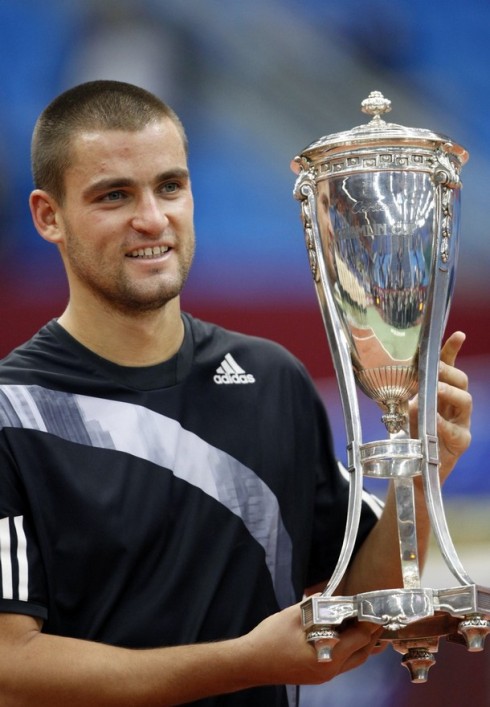
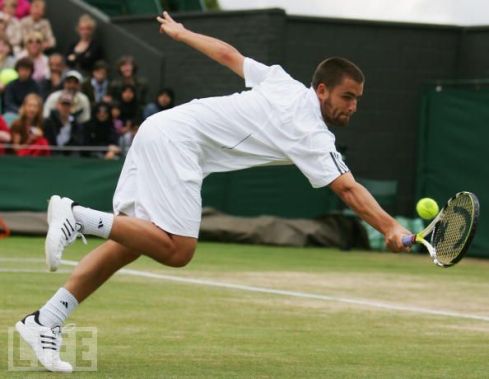
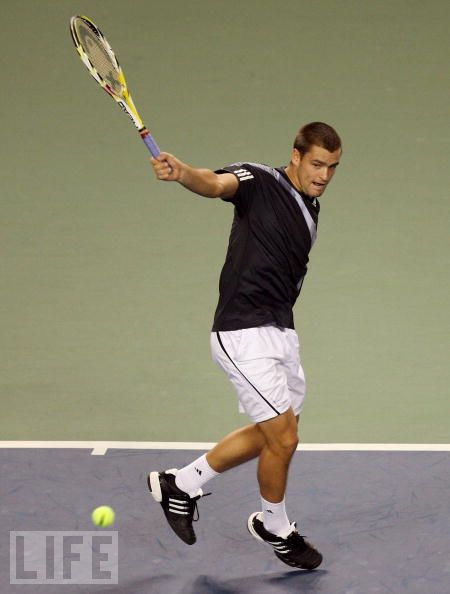
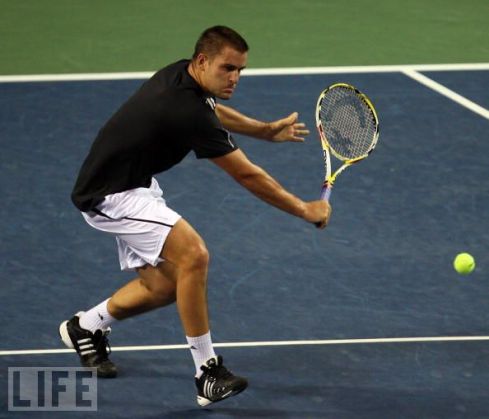
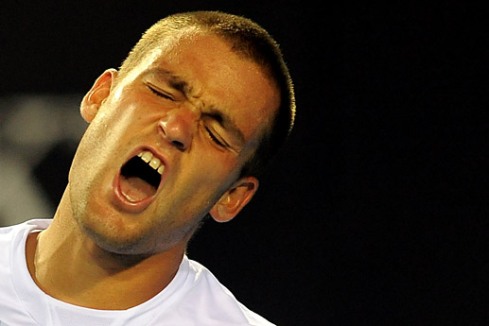

You need to be a member of Tennisopolis : Tennis Social Network to add comments!
Join Tennisopolis : Tennis Social Network